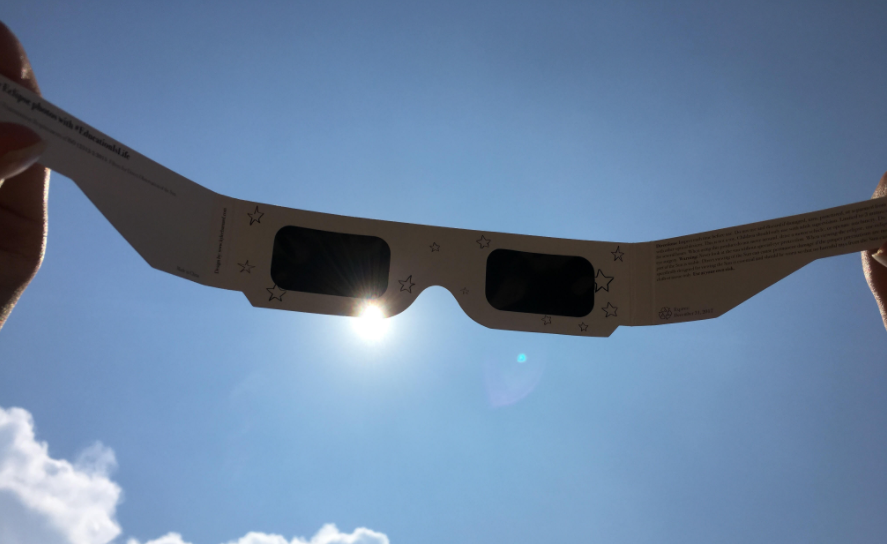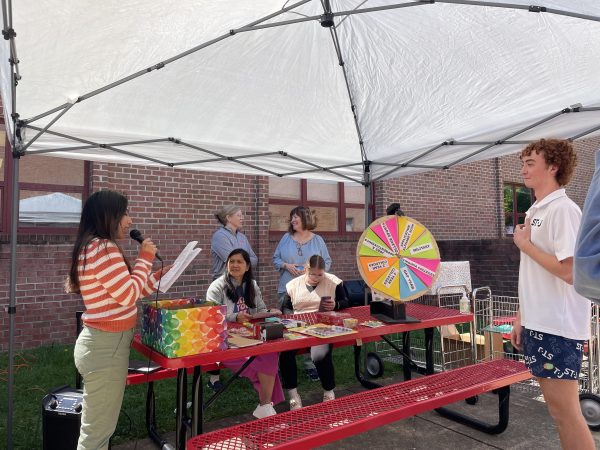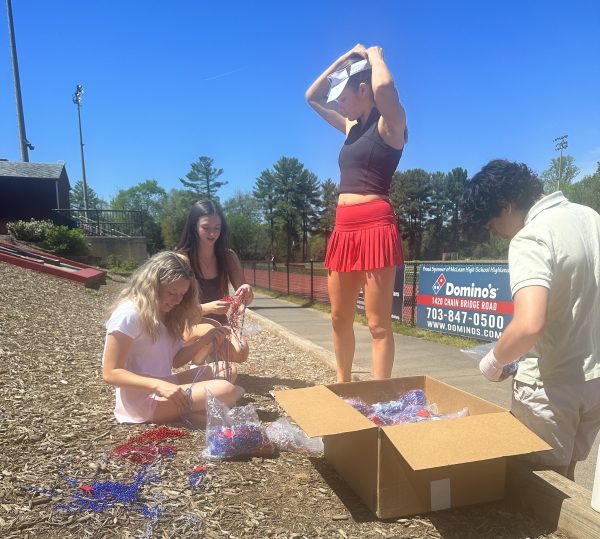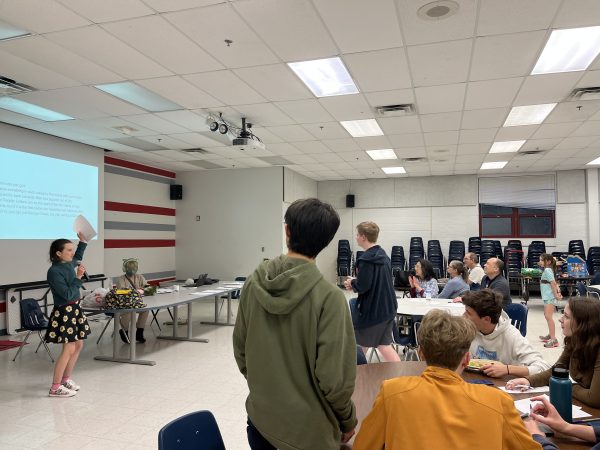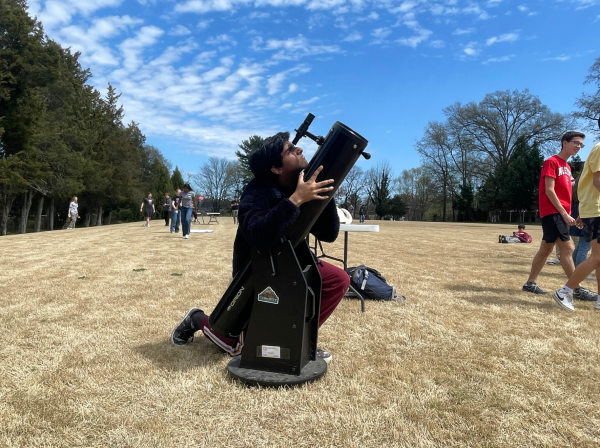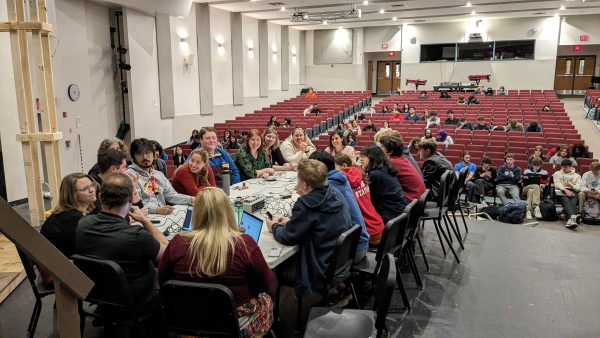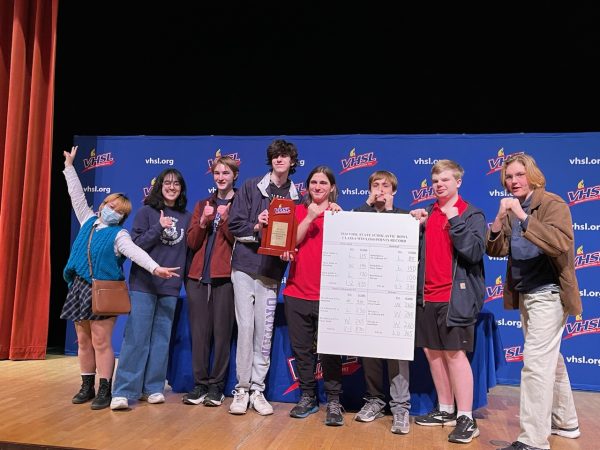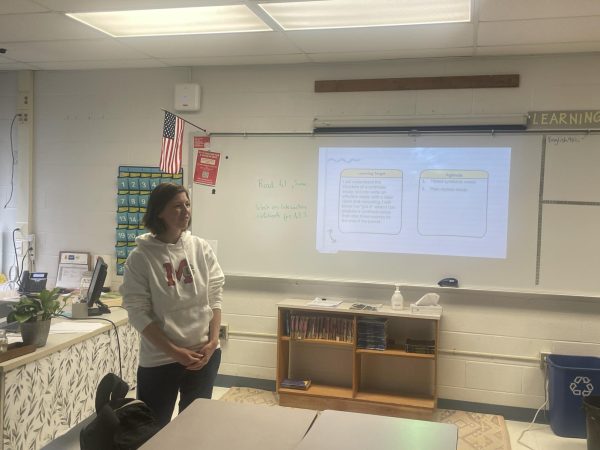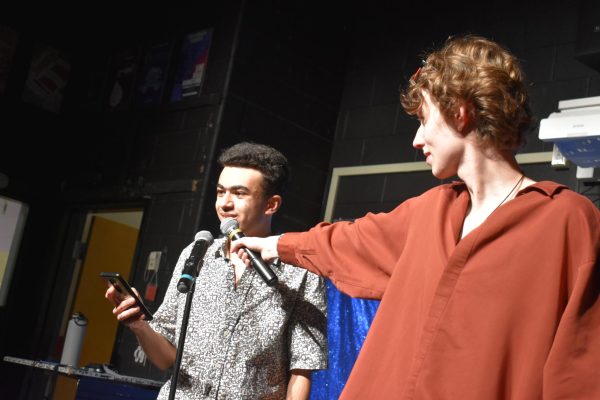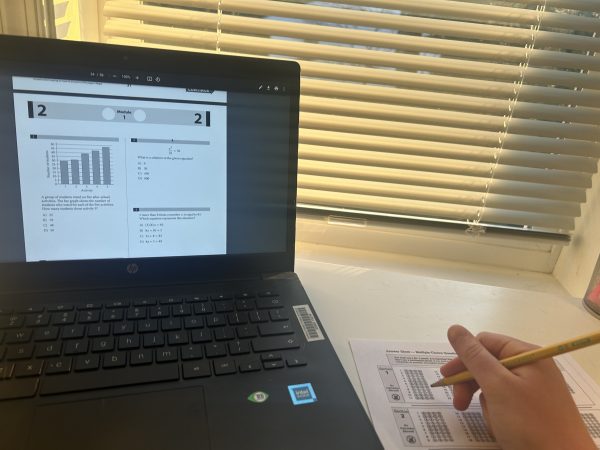The sun is the star of the school
The astronomical event eclipses everyone’s attention
August 22, 2017
The start of a new school year is just a week away, yet at least 50 students are crowding the courtyard, talking fervently amongst themselves. Among the crowd of teens, teachers and parents can be seen as well.
All of the people here today have one thing in common; their eyes are all looking up at the sky, or more specifically, the sun.
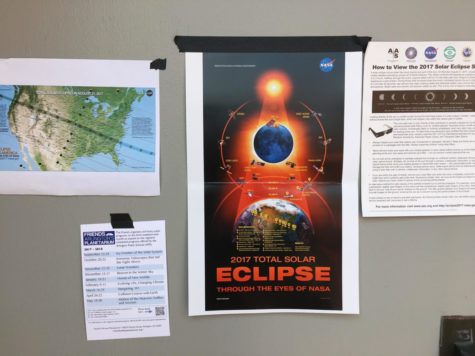
Aug. 21, 2017, is a historic day in astronomy. It is when all of North America is treated to a total solar eclipse; the moon passes in front of the sun, casting a shadow and blocking out the usual daylight for a few hours.
In the case of McLean High School, however, because it is out of the shadow’s path, it is treated to only a partial eclipse, about 80 percent. Still, as a rare event, it has attracted the attention of students, teachers and parents alike. After all, the next total solar eclipse visible in North America won’t come until 2024.
Even before the eclipse started, there were already at least a dozen people gathered out in the courtyard. Several instruments had been set up, and the large telescope was finally pointing towards the heavens.
“Basically, what we wanted to provide was a safe way for people to view the solar eclipse,” astronomy teacher Andrew Diller said, “since not everyone has eclipse glasses.”
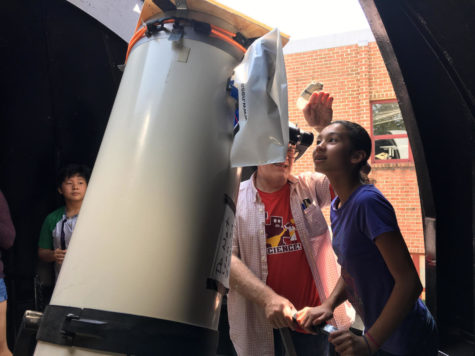
Indeed, the glasses were in limited quantity, and some students had to wander around without means to look directly at the oncoming event. Thankfully, the astronomy teachers had already thought it through. With a solar filter on the 14-inch telescope, people could look directly at the sun, far closer than one would see through the glasses.
Suffice to say, by the time the peak of the eclipse was near, the observatory and telescope were getting quite crowded; lines of people waited outside, all of them hoping to get a close-up view of the sun, so close that even the sunspots were visible. Due to the plethora of people, Dean Howarth, the other astronomy teacher, had to keep everyone away from the telescope itself as to not disturb the trajectory.
Yet those who found the line at the big telescope too daunting weren’t left in the dust; other means had been provided for them to view this event as well.
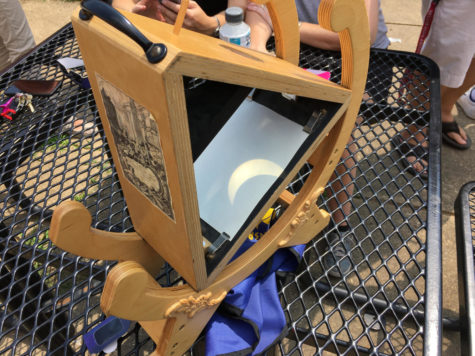
“We have several solar viewers. These box and wood contraptions here take a reflection of the sun and project it onto a piece of paper,” Diller said. “Some of the smaller telescopes also have solar filters on them…some of the telescopes we just use a piece of paper underneath instead of looking through so the image projects onto the paper.”
And there were certainly a lot of people to use the equipment. Of the students on the scene, only a few were former astronomy students; the rest were just people interested in witnessing the eclipse, which may not come again for many years.
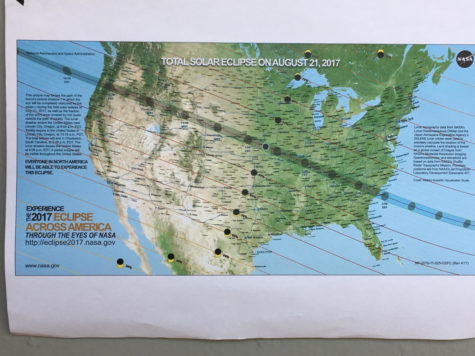
“It’s been a hundred years since one has gone from west coast to east coast all the way across the United States,” Diller said.
Indeed, many people were also looking curiously at the telescopes and images, watching the shadow inch across the Sun. More and more people filled the courtyard as the event reached its peak around 2:48, contrary to the dimming light of the sun. Some had gotten eclipse glasses from stores or online; others had crafted their own homemade observation tools.
A great cheer went up as the peak came, with the sun turning into a crescent and the lights diminished until it looked like late afternoon instead. While some were undoubtedly disappointed that they didn’t see the full deal of the eclipse, it had still been enough to unite people both in and out of McLean for this iconic three hours.
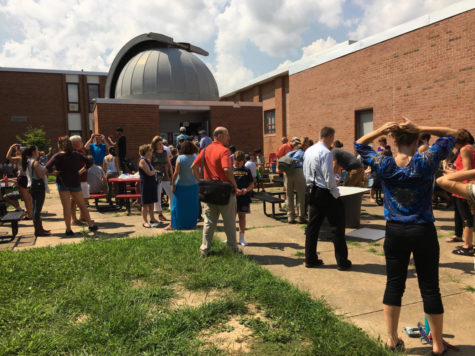
“You see more and more people coming out here…we’re super excited to have this many people out with a chance to see the observatory and get them interested in science a little bit before the school year begins,” Diller said, looking over the courtyard full of people chatting excitedly.



